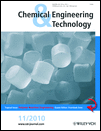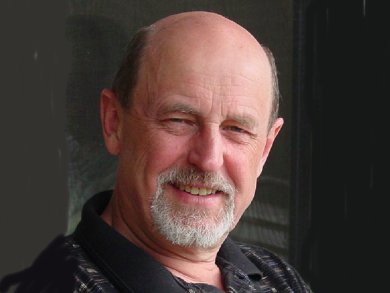 Frantisek Svec, Lawrence Berkeley National Laboratory, CA, USA, is the Guest-Editor of the latest Chemical Engineering & Technology topical issue: Polymer Reaction Engineering. Vera Köster, Editor-in-Chief of ChemViews took the opportunity to talk to him about the Chemical Engineering & Technology topical issue, separation sciences, the Molecular Foundry, and societies.
Frantisek Svec, Lawrence Berkeley National Laboratory, CA, USA, is the Guest-Editor of the latest Chemical Engineering & Technology topical issue: Polymer Reaction Engineering. Vera Köster, Editor-in-Chief of ChemViews took the opportunity to talk to him about the Chemical Engineering & Technology topical issue, separation sciences, the Molecular Foundry, and societies.
Polymers, most often simply called plastics, became indispensable part of our life. We find them everywhere from food packaging and construction to textiles, vehicles, electronics, or furniture. The worldwide consumption of polymers in 2006 was ca. 241 million metric tons with an outlook to almost double and reach 400 million tons in 2016. It is a lot of plastics that has to be produced!
Interview
Your Topical Issue of Chemical Engineering and Technology (CET) on polymer reaction engineering just appeared. How did you select which topics should be covered and whom to invite?
Current literature is rich in polymer chemistry and physics while polymer reaction engineering remains a Cinderella in the field of polymer science and technology. My intention was to fill, at least partly, this gap. I worked together with Dr. Barbara Böck, Editor-in-Chief of Chemical Engineering and Technology, to make a topical issue of CET focused on polymer reaction engineering reality. Without her, this topical issue would remain just a fiction.
To pick the topics, I used my feeling that commodity polymers that are mass-produced today will remain the backbone of the industry in the foreseeable future and new developments are rather expected in the ways these polymers are produced and processed. Polymer reaction engineering concerns polymerization processes and includes all aspects of the polymer technologies. It covers multiple bases starting from the laboratory experiments and going to large megatons production units. Since experimenting on the latter scale is not realistic, modeling and simulation are important parts of today’s polymer reaction engineering. Current trends in polymer reaction engineering also reflect the fact that manufacturing of polymers should be done using environmentally friendly processes. All these issues then largely affected selection of subjects the topical issue was expected to cover.
Once this selection has been made, I used my personal knowledge of the polymer engineering community to pick the potential authors and I also run a deep search in the literature to make sure that none of the major players in this field would escape from our attention. At the end, the list of potential authors counted about 200 names of scientists I approached with an invitation to contribute. Partly to my surprise, I received so many positive answers to the call for papers and the topical issue was secured. The readers can see the result. My personal feeling is that the issue is really good.
How did you select the articles which eventually were included into the topical issue?
The selection of all papers that appeared in the issue was based on rigorous review process. First, Dr. Böck and I checked that the subject fits in the issue. Each suitable manuscript was then reviewed by at least two reviewers and in some cases even more than that. Unfortunately, some manuscripts did not make it through this sieving and were rejected. Only the best were then published.
What are the current trends and where is the field heading given the fact that the basic concepts are limited and already known?
Certainly, the basic concepts of polymer reaction engineering are known just as basic concepts of many other disciplines. However, there are always a lot of uncharted territories that need to be explored. This exploration then leads to new discoveries. The same applies to polymer reaction engineering. Scientists are always finding new approaches to make the polymers faster, to make them stronger, and to provide them with properties better matching their use. In fact, similar criteria and aims are the driving force in all sciences.
You started your scientific career in polymer science but you are known currently as a separation science specialist. What made you compile a topical issue in the field of your former research interest?
It may appear that I deserted from the polymer science to find my good fortune in the separations. This is not completely correct. In fact, I remain loyal to polymers even while doing research let’s say in chromatography or enzyme immobilization. Those who read my papers know that we are developing new polymer-based separation media using techniques typical of polymer chemistry including thermally and UV initiated polymerizations, photografting, polymer analogous reactions, etc. Thus, I would characterize my current field as an interface between polymer and analytical chemistry. The “crosspollination” from both sides is quite fruitful and we are getting very interesting results.
You are the Editor-in-Chief of the Journal of Separation Science. How do new developments in polymer reaction engineering affect the separation science?
Obviously, progress in separation science is fed from a variety of sources. I have already mentioned above that I try to implant polymers in chromatography and get materials that are transmuted in separation media and supports with unprecedented properties such as the monoliths. Polymer-based materials are very important elements in the separations. Just imagine where would be pharma industry or biotechnology without chromatographic separations of their products, separations that are often run on a very large scale. For example, porous polymer beads prepared using suspension polymerization followed by polymer analogous functionalization are transformed to packings for ion exchange chromatography. Using approaches typical of polymer reaction engineering the porous structure and exchange chemistry are tailored for specific needs of the separation process.
However, there is also a feedback. Packing materials for size exclusion chromatography consisting of porous polymers are continuously perfected and then used back in polymer reaction engineering during development of new polymers, to monitor polymerization processes, and in quality control and assurance.
As you see, both areas are nicely intertwined.
Currently you are Facility director in the Molecular Foundry. Please, explain to our readers this new concept to do research.
The Molecular Foundry is one of five nanotechnology institutes fully funded by the US Department of Energy. The Foundry accommodates six research Facilities called Imaging and Manipulation of Nanostructures, Nanofabrication, Theory of Nanostructured Materials, Inorganic Nanostructures, Biological Nanostructures, and Organic and Macromolecular Synthesis. These names reveal at what research these Facilities aim at.
The program of the Foundry is providing support to researchers from around the world whose work can benefit from or contribute to nanoscience. Through unparalleled access to state-of-the-art instruments, materials, technical expertise and training, the Foundry provides researchers with the fine tools to enhance the development and understanding of the synthesis, characterization, and theory of nanoscale materials. Researchers (we call them users) from academic, government, and industrial laboratories can twice a year submit a short proposal stating what they want to do in the Foundry and why. The scientific contents of the proposal are then evaluated by outside reviewers. The best of the best proposals are then accepted and the work begins. The actual work here has different facets. Some users send their postdocs and/or students to stay in the Facility for an extended period of time and work with us in the labs. Others are coming for a few days to prepare a sample or device and do the measurements in their home location or vice versa, they prepare their samples at home and come to characterize them in the Foundry. Access to Foundry facilities is free of charge for research in the public domain that is intended for open publication, though all users must bear their own living and accommodation costs.
In addition to the vigorous user program, the Foundry staff scientists also carry out their own world-class research as demonstrated in numerous papers published in the highest impact journals. The major beauty of the institute is the ease with which multidisciplinary project can be run across the Foundry’s Facilities using expertise in such a wide variety of fields.
I suggest those readers who are interested in more details to visit our web site
In addition to your duties as scientist and Editor-in-Chief, you are also president of CASSS (formerly the California Separation Science Society). What is your opinion on the impact of scientific societies and where are they heading?
Scientific societies are an important tool for personal communication among specialists in a specific area. They provide their members with opportunities to networking locally, countrywide, and even internationally, to get them informed about new developments in a specific field, about new instruments and techniques, about services, etc. They organize scientific meetings varying in size from small discussion groups, over half day or full day short courses, tutorials, and hands-on presentations, to full-fetched international symposia. These societies differ in size and scope and include those that serve only local purpose to large ones with an international impact.
CASSS with its ca. 4000 members is in the latter category. We are organizing 10 to 12 conferences annually ranging from 100 to 1200 attendees. Although CASSS is run by volunteers, we have 5 full time meeting planners working in representative offices in Emeryville, CA. We also have our own CASSS Award for outstanding achievements in separation science presented once a year to luminaries of the field.
Once again, for more information go to the web site
It is well known that information is currently the most valuable commodity and the societies are just trading it. Although the electronic communication technologies are rapidly developing, the personal touch remains irreplaceable. Try to shake hand or hug someone over the Internet. We are not there yet! I love to talk with people face-to-face. As opposed to e-mail, it warms up the relations and forms friendships.
Thank you very much for your time for this interview.

Frantisek Svec received both B.S. degree in chemistry and Ph.D. degree in polymer chemistry from the Institute of Chemical Technology, Prague (Czech Republic) in 1965 and 1969, respectively. In 1976 he joined the Institute of Macromolecular Chemistry of the Czechoslovak Academy of Sciences where he was promoted through the ranks to the Head of Department and the Scientific Secretary of the Institute. He then accepted an offer and joined faculty at Cornell University in 1992. Since 1997, he is appointed at the University of California, Berkeley. He currently works as Director of Organic and Macromolecular Facility in the Molecular Foundry of the Lawrence Berkeley National Laboratory.
Dr. Svec authored over 390 publications, he edited 2 books, and holds 75 patents. He is Editor-in-Chief of the Journal of Separation Science and member of editorial boards of a number of renowned journals. In 2003 he was elected President of CASSS (formerly California Separation Science Society). In 2005 he was awarded with M.J.E. Golay Medal in Chromatography and EAS Award for Achievements in Separation Science. He has been selected as the recipient of the prestigious 2008 ACS Award in Chromatography and 2009 Dal Nogare award. In 2006, he obtained Honorary doctorate of philosophy in Sweden and in 2009 Honorary professorship in Dalian, China.
F. Svec is best known for his research in the area of macroporous polymers in different shapes such as beads, flat sheets, and, in particular, monoliths. His studies involve use of these materials in numerous applications including liquid chromatography, electrochromatography, supports for solid phase chemistry, enzyme immobilization, and microfluidics.
-
Special Issue: Polymer Reaction Engineering
Chem. Eng. Technol. 2010, 33 (11), 1723–1949.




